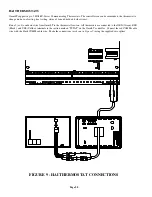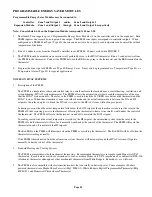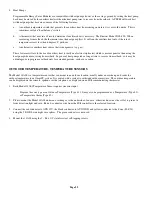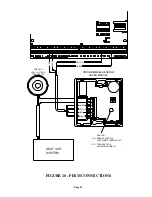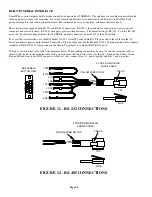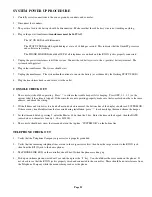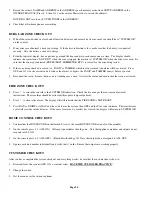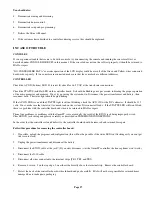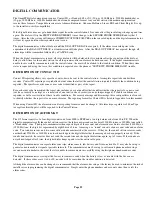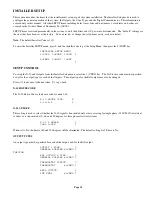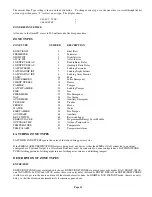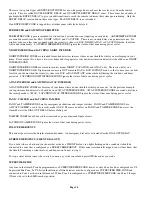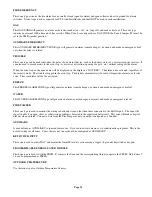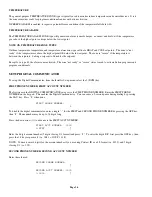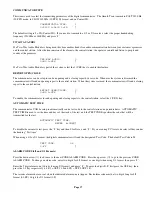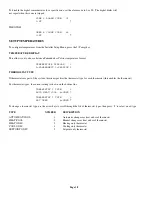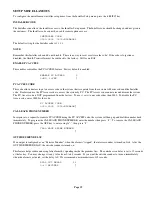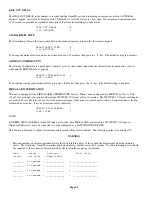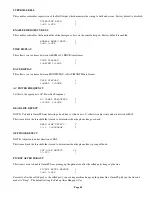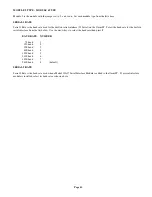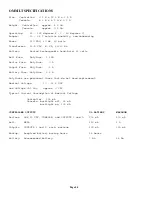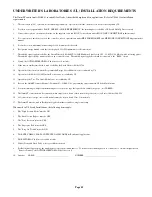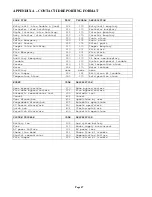
Page 34
There are two special types of ENTRY/EXIT ZONES for use with garage doors, or doors that are far away from the control
console. They are called DOUBLE ENTRY DELAY and QUADRUPLE ENTRY DELAY zones. These zones have double or
quadruple the ENTRY DELAY to give you additional time to reach the console to disarm the system upon returning. Only the
ENTRY DELAY is extended on these zone types. The EXIT DELAY is not extended.
If an ENTRY/EXIT ZONE is tripped first, all other zones will also be delayed.
PERIMETER and LATCHING PERIMETER
PERIMETER ZONE types are intended for windows and exterior doors not requiring an entry delay. All PERIMETER ZONES
are armed in security modes DAY, NIGHT, AWAY, and VACATION. There is not an entry delay on a perimeter zones. If a
window or door on this zone is opened while the security system is in DAY, NIGHT, AWAY or VACATION mode, the alarm
will sound immediately. LATCHING PERIMETER ZONES ignore the status of that zone during power cycles.
NIGHT INTERIOR and LATCHING NIGHT INTERIOR
NIGHT INTERIOR ZONES are intended for motion detectors in areas where no one should be while you are sleeping in your
home. For example, if you have a two-story home and sleep upstairs, your downstairs motion detector(s) should be on a NIGHT
INTERIOR ZONE.
NIGHT INTERIOR ZONES are armed in security modes NIGHT, VACATION, and AWAY only. There is no delay on a
NIGHT INTERIOR ZONE. Night interior zones are NOT armed in DAY or DAY INSTANT mode, so that you may move about
freely in your home when the security system is in DAY or DAY INSTANT mode, while still having the windows and doors
protected. LATCHING NIGHT INTERIOR ZONES ignore the status of that zone during power cycles.
AWAY INTERIOR
and LATCHING AWAY INTERIOR
AWAY INTERIOR ZONES are for areas of your home where no one should be while you are away. In the previous example,
your upstairs motion detector(s) should be on an AWAY INTERIOR ZONE. AWAY INTERIOR ZONES are armed only when
the security mode is AWAY. LATCHING AWAY INTERIOR ZONES ignore the status of that zone during power cycles.
PANIC, TAMPER, and LATCHING TAMPER
PANIC and TAMPER ZONES are for emergency pushbuttons and tamper switches. PANIC and TAMPER ZONES are
ALWAYS ARMED, even if the security mode is OFF. There are no delays on PANIC and TAMPER ZONES, however, the
OmniLT waits the DIAL OUT DELAY before dialing out.
TAMPER ZONES should be used for items such as gun cabinets and liquor closets.
LATCHING TAMPER ZONES ignore the status of that zone during power cycles.
POLICE EMERGENCY
This zone type activates the burglar alarm and sounder. An emergency dial out is activated after the DIAL OUT DELAY.
DURESS EMERGENCY (SILENT DIAL OUT)
If you wish to have a button in your home that activates a SILENT dial out, (no lights flashing and no sounder) it should be
connected to a zone that is configured as a DURESS EMERGENCY. If this zone is accidentally tripped, you will not know that
the OmniLT is making a silent dial out, and hence won't know to stop it.
To stop a silent dial out once it has started, you must go to the console and press OFF then enter your code.
SUPERVISED FIRE
Any zone in the OmniLT can be programmed as a SUPERVISED FIRE ZONE, however, only Zone 8 can be configured as a UL
Supervised Fire Zone. In UL Listed Installations, all fire detectors must be configured as a SUPERVISED FIRE ZONE and
connected to Zone 8 as shown in this manual. When Zone 8 is configured as a SUPERVISED FIRE ZONE, the Zone 8 Jumper
(J9) must be set to the SMK (smoke) position.

